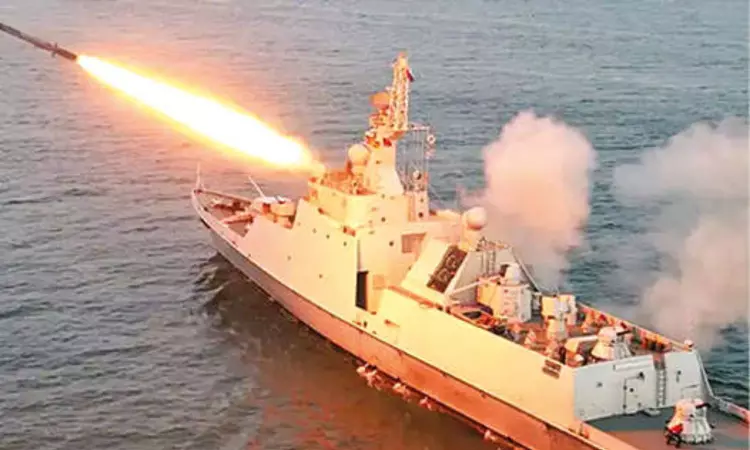Strange bedfellows: What’s behind N Korea’s ‘nuclear attack’ drills?
Nuclear strike against the South followed by an invasion across the Demilitarized Zone that divides the peninsula and then the occupation of North Korea.

Korean Peninsula
WASHINGTON: Pyongyang has managed to increase the already elevated tensions on the Korean Peninsula in recent days with a number of military firsts.
The latest actions by the North Korean regime underlined its burgeoning alliance with Russia, with the anticipated announcement of a summit between the reclusive nation’s leader Kim Jong Un and Russian President Vladimir Putin in Vladivostok, on the Pacific Coast of Russia.
State media reported last week that Kim had overseen military exercises that simulated a “scorched earth” nuclear strike against the South followed by an invasion across the Demilitarized Zone that divides the peninsula and then the occupation of North Korea’s ideological rival.
The North said it had acted as South Korea and the US were plotting a pre-emptive nuclear assault on the North, adding, “The [Korean People’s Army]
staged a tactical nuclear strike simulating scorched-earth strikes at major command centers and operational airfields of the [South Korean] military gangsters.”
The drills included the firing of two tactical ballistic missiles from mobile launchers close to Pyongyang.
Pyongyang said it was sending a “clear message” to Seoul and Washington, which have recently completed the 11-day Ulchi Freedom Shield joint military exercise that included US nuclear-capable B-1B strategic bombers flying with a fighter escort over the peninsula.
The North insisted that the flights show the US was “moving toward a pre-planned nuclear pre-emptive strike against us.” Pyongyang followed that exercise up with a “simulated tactical nuclear attack” on Saturday with the launch of two cruise missiles carrying dummy nuclear warheads, state-run media added.
Analysts say it is clear the North has made great strides in its development of nuclear weapons and long-range missile systems, but it has little chance of successfully invading and occupying the southern half of the peninsula — despite a standing army of 1.3 million service members.
“In the past, the North Koreans invested heavily in artillery and building up their ammunition supplies, but virtually all of that is from the 1940s and 1950s,” said Lance Gatling, a security and aerospace analyst and founder of Tokyo-based Gatling Associates.
“So, while they have a tremendous amount of this stuff and rocket artillery, it is not very precise over long ranges. Also, the ubiquitous intelligence, surveillance and reconnaissance capabilities of advanced countries have a tremendous impact on any offensive capability they [North Korea] might have,” he told DW.
Another problem the North faces is that it only has three potential ground routes of attack against the South, due to the geography of the peninsula,
with any assault funnelled into narrow areas and quickly resulting in what experts call “a cauldron of death” for the North’s elderly tanks and under-equipped infantry units at the hands of the South and US forces.
It would be a similar situation for the North’s air force, said Garren Mulloy, a professor of international relations at Daito Bunka University in Japan and an expert on military issues.
“Fighter pilots in NATO countries will put in a minimum of 200 hours of operational flying every year on the most advanced aircraft in their arsenals,” he said.
“It is estimated that North Korean pilots are only able to put in 20 hours a year due to shortages of fuel and their inability to obtain spare parts for their aircraft.”
There are additional question marks over the North’s capabilities in other areas, including chemical, biological and bacteriological weapons, often dubbed the “poor man’s nuclear weapons.”



